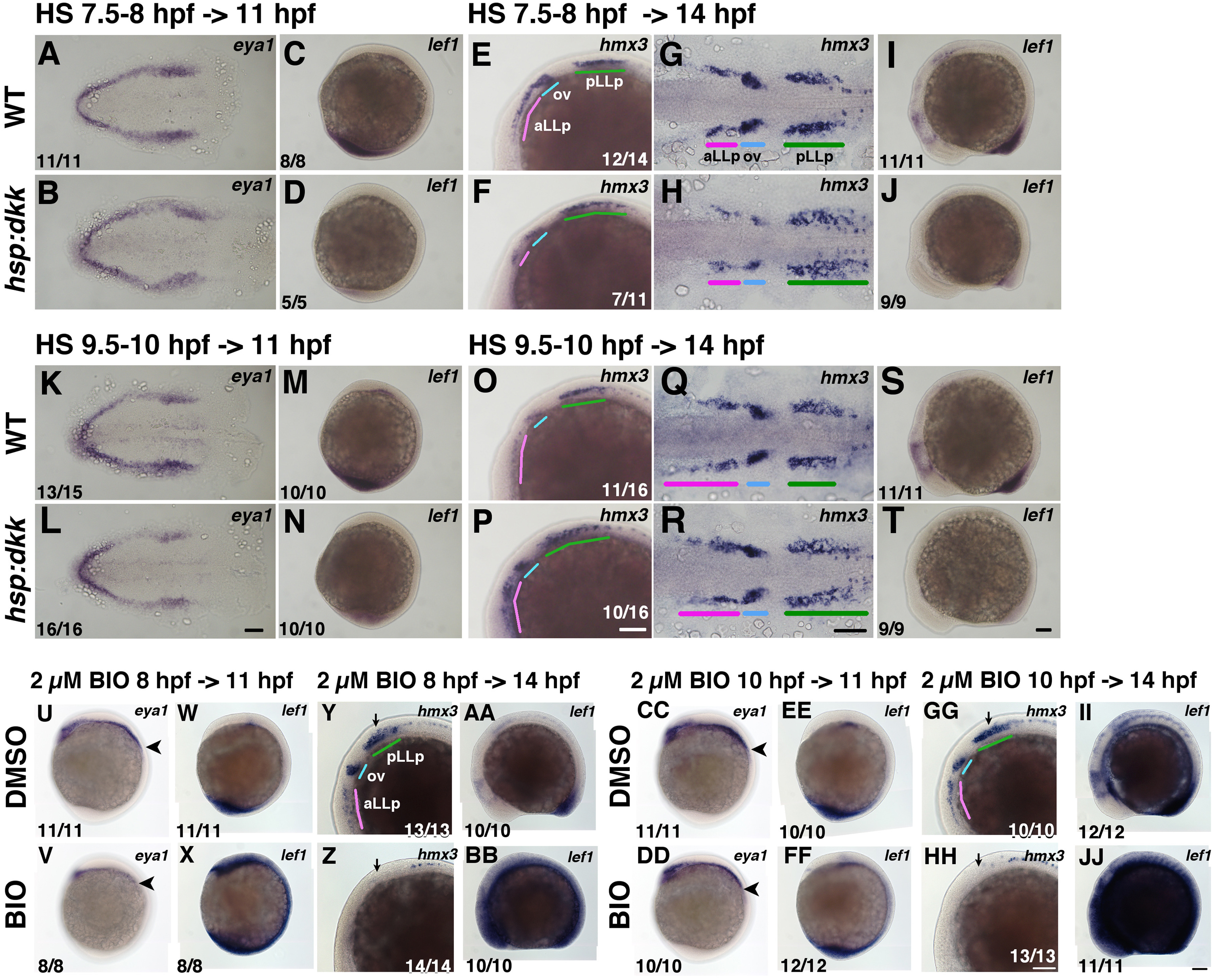Fig. 1
Loss of Wnt signaling expands the pLLp, whereas Wnt activation inhibits the pLLp. Suppression and activation of Wnt activity using Tg(hsp:dkk-gfp) (A-T) and BIO (U-Z, AA-JJ), respectively. Duration of the heat shock (37 °C, 30 min) and timing for fixation are indicated on the top-left of pictures. Durations of BIO treatment are shown on top of pictures. BIO treated embryos were fixed just after incubation. Genotypes for all embryos in the same row are shown on the left, as are the drugs used (0.5% DMSO, 2 µM BIO). Numbers in the bottom-rigft (E, F, O, P, Y, Z, GG, HH) or left (the rest) indicate the number of embryos with the phenotype shown in the panel out of the total number of examined embryos. In all panels anterior is to the left. (A, B, K, L) Flat-mounted embryos at 11 hpf stained with eya1. (G, H, Q, R) Flat-mounted embryos at 14 hpf stained with hmx3. (C, D, M, N, U-X, CC-FF) Lateral views of 11 hpf embryos. Anterior is on top. (E, F, I, J, O, P, S, T, Y, Z, AA, BB, GG-JJ) Lateral views of 14 hpf embryos. Colored bars indicate the positions of the aLLp, otic vesicle and pLLp. Abbreviations: aLLp: anterior lateral line placode, ov: otic vesicle, pLLp: posterior lateral line placode. Black arrowheads in (U, V, CC, DD) indicate the posterior end of eya1 expression areas. Black arrows in (Y, Z, GG, HH) mark the positions of the pLLp. Scale bars: 100 µm.
Reprinted from Developmental Biology, 431(2), Nikaido, M., Acedo, J.N., Hatta, K., Piotrowski, T., Retinoic acid is required and Fgf, Wnt, and Bmp signaling inhibit posterior lateral line placode induction in zebrafish, 215-225, Copyright (2017) with permission from Elsevier. Full text @ Dev. Biol.

